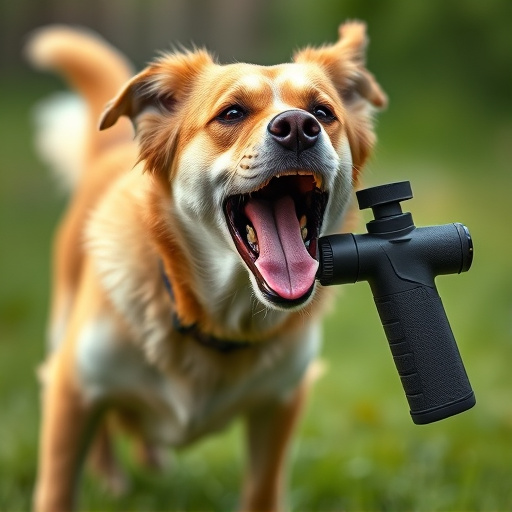Animal control pepper spray, or neutralizing mace spray, is a tool to temporarily subdue aggressive dogs using capsaicin. When used on pets, it aims to calm them while minimizing harm. Choosing the right spray based on pet needs, skin type, fur texture, and coat health is crucial. Effective application involves understanding the product's nozzle, practicing aiming in open areas, and targeting sensitive areas with short bursts at a 90-degree angle. Always select pet-safe products for safe use and to prevent adverse reactions.
“Animal control pepper spray, a powerful tool in managing aggressive or wild animals, has revolutionized safety measures. This non-lethal self-defense mechanism is designed to stun and temporarily disable, providing crucial time for escape. In this comprehensive guide, we’ll explore the inner workings of neutralizing mace spray on pet skin, a topic that’s both practical and sensitive. We’ll break down factors to consider when choosing the right spray and offer safe application techniques, ensuring your peace of mind without causing harm.”
- Understanding Animal Control Pepper Spray: What It Is and How It Works
- Choosing the Right Pepper Spray for Pet Skin: Factors to Consider
- Effective Application Techniques: Neutralizing Mace Spray on Pets Safely
Understanding Animal Control Pepper Spray: What It Is and How It Works
Animal control pepper spray, also known as neutralizing mace spray, is a specialized tool designed to subdue and temporarily incapacitate animals, particularly aggressive dogs. It’s not just about scaring them away; the spray contains capsaicin, the same compound found in chili peppers, which blocks nerve signals, causing the animal to experience discomfort and temporarily lose balance or aggression. This gives animal control officers a chance to safely restrain or evacuate the area.
When used on pet skin, neutralizing mace spray aims to minimize harm while effectively calming the animal. It’s crucial to note that these sprays are not meant for prolonged use or repeated application, as they can cause skin irritation or other health issues in pets. Proper handling and adherence to safety guidelines are essential when using any type of pepper spray, especially around animals.
Choosing the Right Pepper Spray for Pet Skin: Factors to Consider
When selecting a pepper spray for animal control, understanding your pet’s skin type is crucial. Unlike human use cases, pets have unique needs due to their sensitive fur and skin. Factors like texture, length, and overall health of their coat play significant roles in determining the effectiveness and suitability of the spray. For example, shorter coats may require a more concentrated formula to ensure full coverage and neutralization, while longer, denser fur could demand lighter applications to avoid irritation.
Additionally, considering the environmental impact is essential. Weather conditions, such as humidity and heat, can affect how the spray performs. Oily or water-resistant coats might necessitate specific types of neutralizing mace spray designed to penetrate these barriers effectively. Always opt for pet-safe options formulated explicitly for animal control to prevent any adverse reactions and ensure a safe environment for both your pets and you.
Effective Application Techniques: Neutralizing Mace Spray on Pets Safely
When it comes to using pepper spray, or “Mace,” as a means of animal control, understanding effective application techniques is paramount to ensure safety and success. The first step in neutralizing Mace spray on pet skin is to familiarize yourself with the product’s nozzle and trigger mechanism. Practice aiming and activating the spray in an open area, far from living spaces, to get a feel for its range and dispersion pattern.
For pets, it’s crucial to target specific areas like the face and eyes, which are sensitive entry points. Hold the can at a 90-degree angle, pointing towards the animal’s face, and activate the spray in short bursts. This technique helps control the amount of irritant released while minimizing potential harm to your pet or bystanders. Remember, the goal is to neutralize and deter, not cause prolonged distress.
Animal control pepper spray, or mace spray, can be an effective tool for managing aggressive animals. However, safely neutralizing it on pet skin requires understanding its mechanics and proper application techniques. By considering factors like pet skin sensitivity, choosing the right spray, and mastering application methods, you can ensure both animal safety and minimal discomfort. Remember, responsible use of mace spray is key to effectively addressing potential threats while safeguarding your pets.
